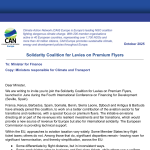The LULUCF Regulation sets an EU-wide net removal target of 310 Mt CO2e by 2030, with specific targets for each Member State.
Despite the commitment, projections indicate that the EU is off-track to meet such a target. To keep global temperature rise below 1.5°C, science indicates the importance of rapid GHG emission reductions and increased removals. The EU must reverse this trend by enhancing natural sinks on land and at sea in the coming years.
However, the EEA report highlights the poor state of nature in the EU. Only 15% of European habitats protected by the EU Habitats Directive have good conservation status, while 81% are in poor or bad condition. This underscores the urgent need for improved climate and biodiversity actions.
Amid this scenario, a hard-fought Nature Restoration Law was adopted on June 17 after facing fierce opposition throughout the legislative process. The NRL sets binding targets for restoring a EU-wide area-based of land and sea, as well as degraded ecosystems. The main goal is to enhance the EU’s biodiversity, ecosystem services and contribute to climate change mitigation (see more on “Nature Restoration Law: Essential Progress in Biodiversity and Climate Action – Implementation will be key”).
Ambitious land- and ocean-based actions to protect and restore ecosystems provide co-benefits for climate mitigation, climate adaptation, and biodiversity goals. Therefore, the potential synergies between the NRL and the LULUCF regulation and the overall carbon removal are evident: By scaling up ecosystem restoration and halting environmental degradation, the EU will significantly increase nature-based carbon removals and (may) get back on track to meet their commitments under the LULUCF regulation.
We highlight three ecosystems in which a scale up of restoration can go hand in hand with carbon removals:
- Forests
- Peatlands
- Marine ecosystems
➡️ Read the full Policy Brief: “Nature Restoration as a Tool to meet LULUCF Targets”



